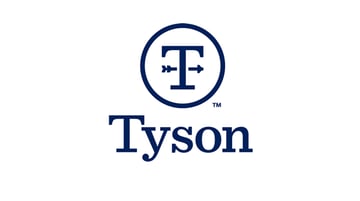Convenience has always been a key driver of consumer purchases in the food industry. While today’s consumers are more conscientious about the foods they eat, they still want products that are convenient and easy to prepare. Research by Nielsen revealed that one in four U.S. adults has purchased a meal kit in the last year, and 70 percent continue to buy them after making their first purchase.
What’s more, consumers are willing to pay more for retail prepared foods. SmartFoods and CNBC News found that consumers pay twice as much for precut foods such as pineapples and kale. While the demand for convenience presents profitable opportunities for your brand, it may double the food safety risk.
A recent Food Dive article, “Thinking Outside The Meal Kit Box To Improve Food Safety and Quality,” draws attention to the safety problem of meal kits, and by extension, other convenience foods. These include:
- Temperature-control violations
- Labeling problems
- Packaging issues
It’s not difficult to see why these problems arise, as convenience foods present some challenges for manufacturers.
Supply chain complexity
Convenience foods deepen the complexity in the supply chain. Meeting the demands means more product offerings which in turn implies new ingredients and suppliers. This could make product traceability more difficult.
Logistics
Freshness and on-time delivery are the perks of convenience foods. Figuring out a way to keep products fresh, safe and delivered on time to consumers can be a tough nut to crack.
As with other issues in the food industry, the challenges of convenience food present opportunities for innovation. How do you ensure product safety while providing convenience on the go?
Innovate your packaging
The right packaging is critical for the safety of any food product, especially convenience foods. You should aim for packaging that not only keeps your product safe but allows extended freshness and product traceability. Brands like HelloFresh are leading in this area, using insulated boxes to ensure optimal freshness of their products in transit.
Making sure consumers understand the packaging and preparation instructions is also important. Finding unique ways for consumers to interact with your brand through packaging is the way to go.
Prioritize safe sourcing
With the regulatory emphasis on prevention of food contamination, you have to pay more attention to ingredient sources. This means developing stringent testing methods and auditing your supplier base. Of course, this would be difficult if you do not have a complete grasp of your supply chain.
Monitoring, tracking and tracing your food products is easier with the right technology. Investing in supply chain management and traceability software can give you greater control and real-time visualization of your supply chain.
The companies winning consumers over are those delivering healthy, convenient foods while being transparent about their products’ origins. FoodLogiQ works with manufacturers and other stakeholders to ensure safety and compliance of food products from farm to fork.
FoodLogiQ is the leading provider of food safety, traceability, and supply chain management software. Find out how FoodLogiQ can help you deliver convenience to your consumers without compromising on quality. Request a demo.
Other posts you might be interested in
View All Posts
Supplier Compliance
8 min read
| May 31, 2018
In Wake of Romaine Lettuce Recall, FoodLogiQ Shares Thoughts on the Importance of Supply Chain Management and Food Traceability
Read More
Trustwell News
4 min read
| February 26, 2018
FoodLogiQ and Testo Partner to Revolutionize Global Food Supply Chain
Read More
Quality Management
5 min read
| August 23, 2018
